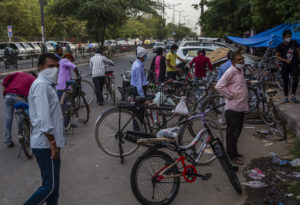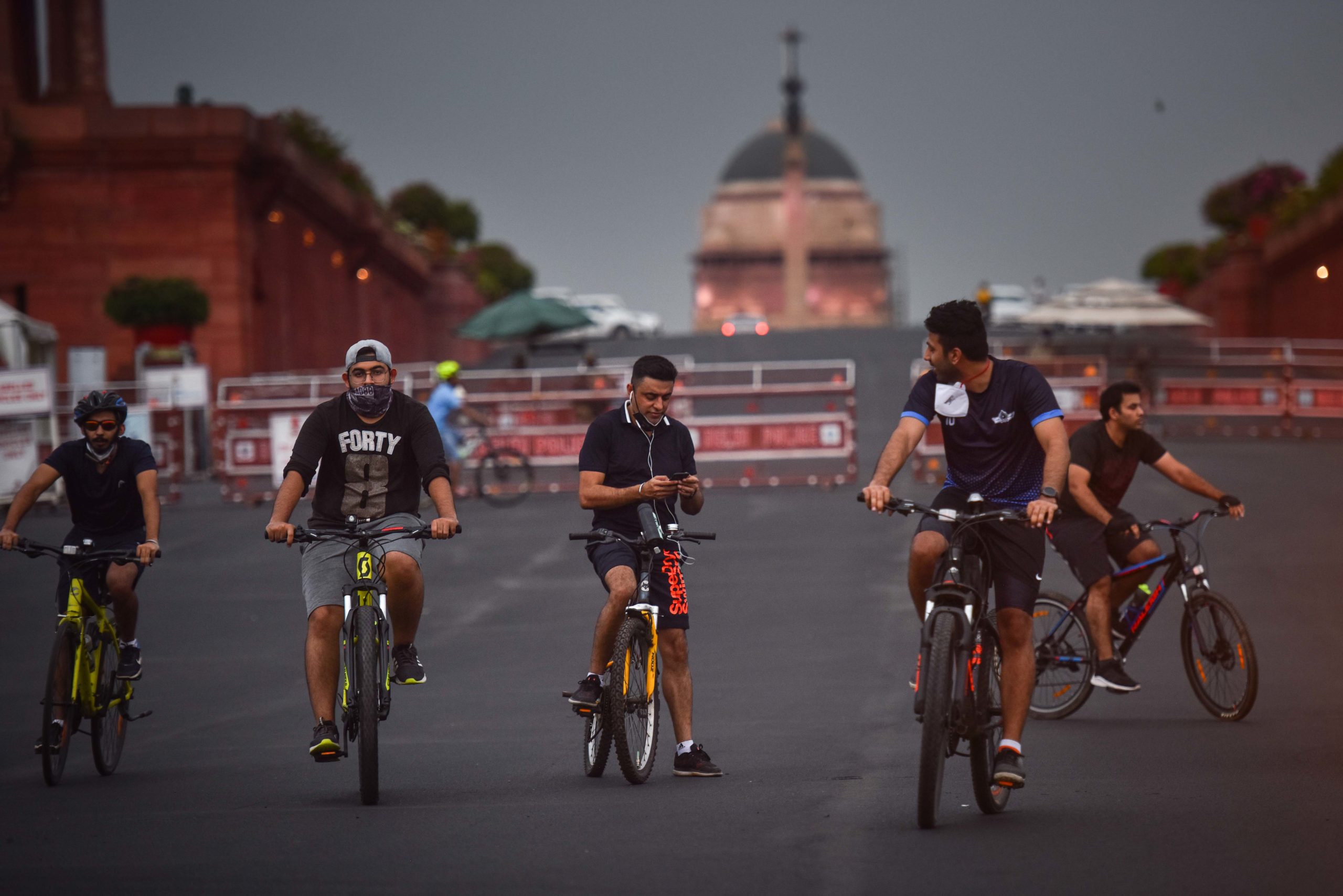The Covid-19 lockdown has seen restrictions on public life and transport. Hence, people are preferring cycles as mode of transport or a way to keep fit
The telephone in Tarun Gupta’s bicycle shop in South Delhi has been ringing non-stop all day. As he deals with customers, a line forms outside. “Business is booming, but the rush has become exhausting,” he says. This, Gupta says has been a regular feature in his shop ever since India entered the Unlock phase and offices started reopening.
Although most Indian cities are not bicycle-friendly, there has been a sharp increase in recreational cycling during the pandemic as people try to beat cabin fever during lockdowns, get exercise, or avoid commutes on stuffed public transport.
In a survey of 1,400 people constituting people from all stratas of society, conducted by NGO Dilli Dhadakne Do, it was revealed that 97% of respondents want to buy a cycle as they find it the safest mode of transport in these Covid times.
Gupta and his partner have been running a shop selling high-end bicycles and accessories in a posh South Delhi neighborhood for four years.
Business suffered during India’s nationwide lockdown announced in March, but he has more than made up for it since the easing of restrictions.
“Every year, March to June our sales see a peak. But in the last two months, sales have increased up to five-fold,” he says. “We’ve already done enough business for the whole year.”
Gupta still opens his store at 11 in the morning, but he is often forced to close late as customers keep coming in. He said the shop sees about 50-60 customers a day, some of whom are willing to spend over Rs 65,000 on a single cycle. A low-end bike goes for around Rs 5,000.
“This kind of boom in the bicycle industry has never happened. Even dealers who’ve been in the business for 50 years have never seen such sales. This is unprecedented,” Gupta said, adding that the long hours are wearing him out.
A representative from the Decathlon store in Rohini says that ever since they reopened, cycles are being sold like hot cakes. “We have seen a growth of almost 50% in the sale of cycles, and to be honest, it makes most of our profit”, he says.
As more cyclists take to the streets of Indian cities, people are starting groups on social media to meet and organise rides. Gurpreet Singh Kharbanda, a New Delhi resident, created a group in early July. It already has 90 members, about 50 of whom are beginners.
“People wanted a break from this monotonous routine during the pandemic. There were no outings and no fitness,” Kharbanda says. “I wanted to create a sense of community bonding and get more people to be active and take up a healthy lifestyle. It’s also a great way to meet new people on rides.”

The group mostly meets on weekends and rides around the city. One of the most popular spots for cyclists in New Delhi is the boulevard in front of Rashtrapati Bhavan.
In Kolkata, cycling enthusiasts have banded together to lobby for more bike lanes and promote the benefits of cycling for the community. The group says it wants to remove “obstacles to cycling in Kolkata while inspiring cycling culture in the city.”
Shiladitya Sinha, a member and organizer of the group, said that they have also brought a lot of people to the sport of cycling since the lockdown began. Some people come to them having never ridden a bike before.
“As far as Kolkata is concerned, the bicycle boom on one level is a very spontaneous thing, while on another level, it’s been a dedicated effort from our side,” Sinha told.
Most public transport in Kolkata was suspended by lockdowns. The metro alone carries 700,000 passengers daily.
“People now need private transport more than ever. Most of them cannot afford a car or motorbike, so cycling has become the only option for them now,” Sinha said, adding even people who can afford motorized transport are starting to opt for cycling.
India’s Housing and Urban Affairs Ministry said the pandemic has presented an opportunity to make cities more accessible to pedestrians and cyclists.
In a June advisory, it recommended pedestrianisation of at least three markets in every city and more bicycle lanes.
Sree Kumar Kumaraswamy, the head of urban transport at research firm WRI India, said the current trend could help make cycles an alternative mode of transport in urban areas.
“Currently, cycling is largely seen as something only poor people do. Instead, this needs to become the ‘cool thing’ the young and educated are involved in,” Kumaraswamy told a leading news daily.
“This needs to be enabled by ensuring safety on the road and efforts to enhance the comfort of cyclists,” he said, adding that most people are scared away from cycling due to safety concerns.
“Dedicated cycling lanes with physical demarcation and segregation from other traffic is essential. We need to redesign street intersections to give priority for cyclists, minimisse conflict points and enhance safety,” he said.
As lockdowns left commuters without public transport options to travel within the city, cycling provided a temporary solution. But after things get back to normal, rethinking public transport with cycling in mind could make a difference in cities.
Adding cycling to long-distance commutes using buses is one idea. “Better bus transport with good facilities to walk and cycle in the first mile and last mile will help to make our cities more liveable,” Kumaraswamy adds.
(Cover: Cyclists enjoy an evening in front of the Rashtrapati Bhavan // Photo: Getty Images)





